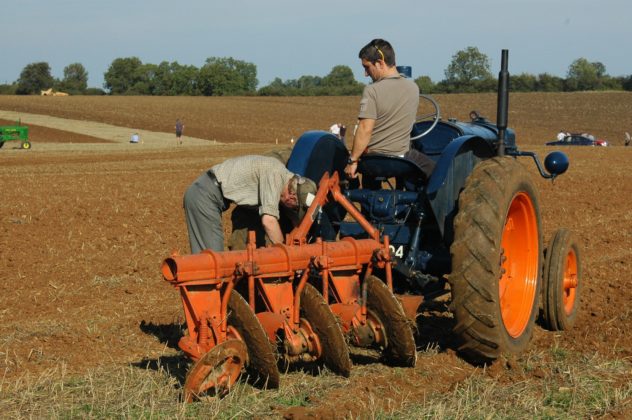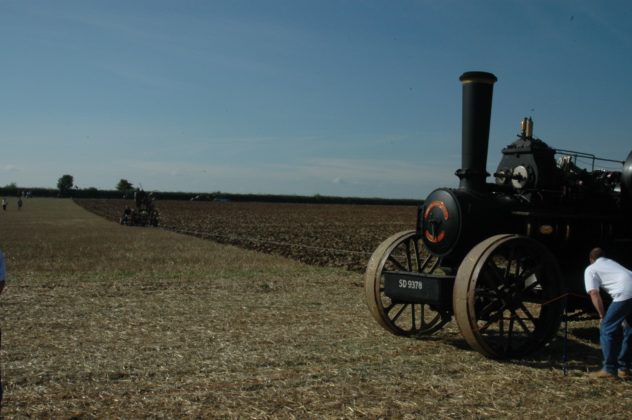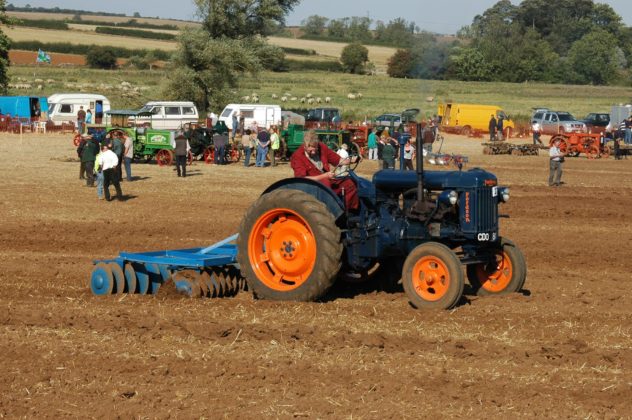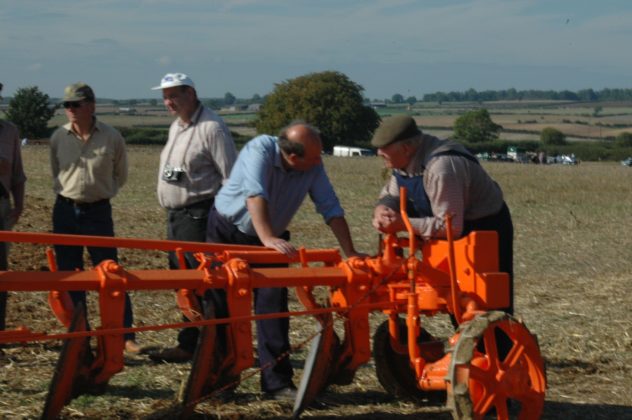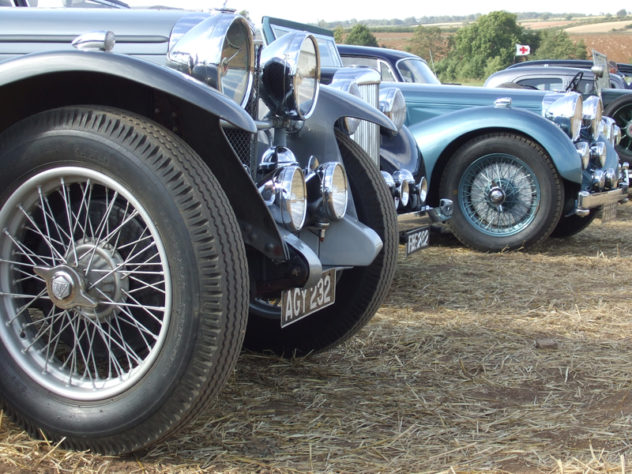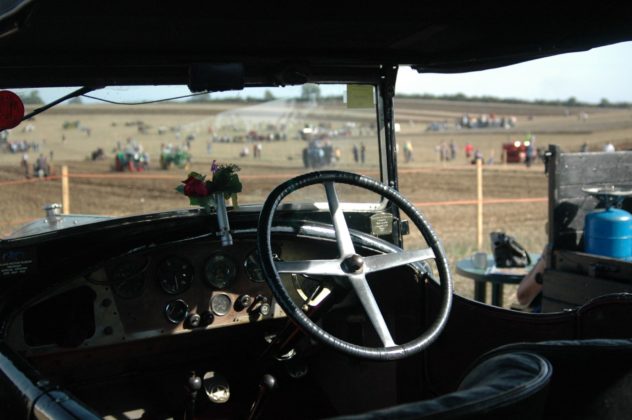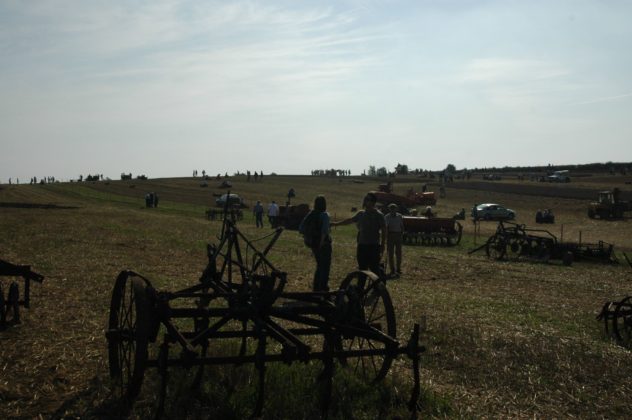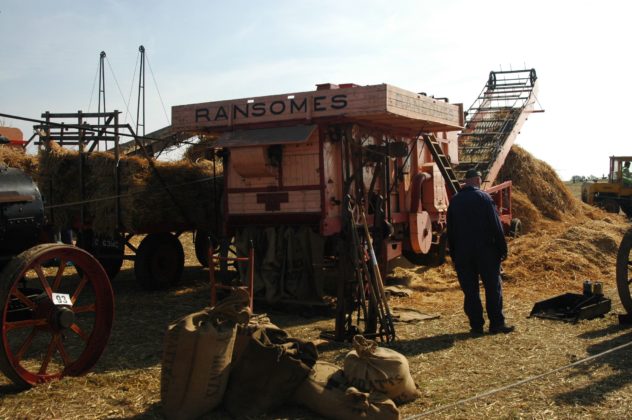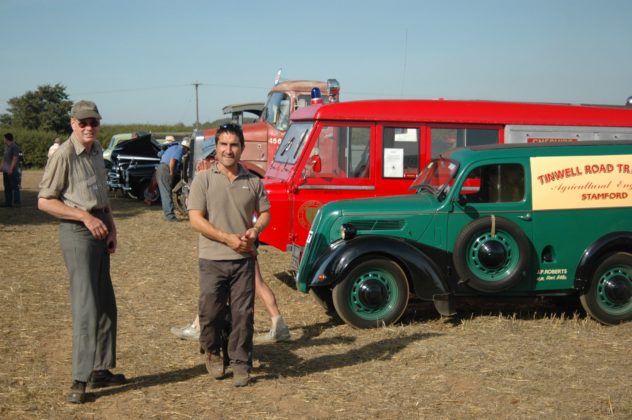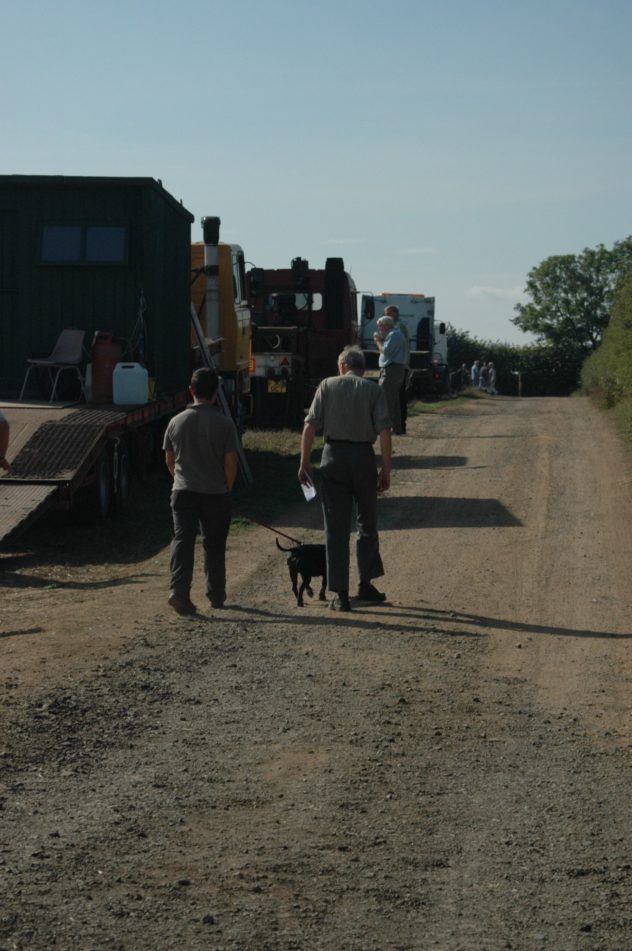Hurricane Irma Clean-Up
To all those with time and willingness to come down to Florida but wondering, as I did, how to be part of the solution rather than the problem, I thought it might be useful to write a few words.
I watched the weather avidly as I was flying into the northern US as Irma was bearing-down on the Florida Keys. It was weird to attend a disaster mapathon at OSM Canada, and hear people discussing buildings and features of my beloved Boot Key Harbour. Live-aboard lfe in the Keys is another part of my life, which seemed remote from my work in Africa, and it was eerie to think of places like Sister Creek and Big Pine Island as disaster zones to be mapped.
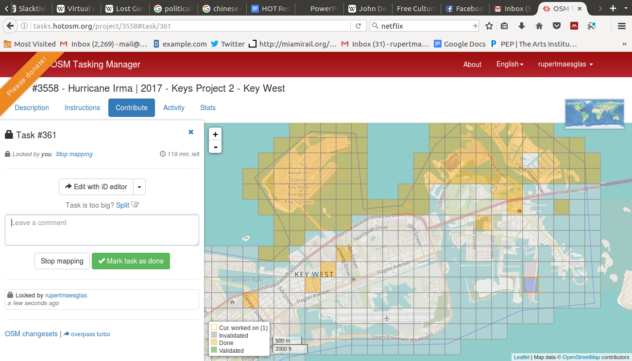 Community Mapping Florida Keys Disaster Zone – Screenshot from a Mapathon
Community Mapping Florida Keys Disaster Zone – Screenshot from a Mapathon
I thought I should come down self-contained, and knew, in fact, that I might be more useful within the local communnity, rather than as part of an NGO relief intervention which might, or might not, reach the communities who really needed it. But how to have a low personal impact? I miss the Keys, and was concerned for the place – so devastated by the 1932 hurricane – and my friends. Since arriving, I have discovered that not one of my friends did not lose their home. Some have found them again, washed up damaged, impossibly high in the mangroves or well inland. Many have never seen their boat/home since the storm, and now don’t really expect to ever find it. None of it was due to their bad seamanship and preparation. There is a hint that some people were unprepared. One boat with the sails left on, or badly lashed-down, can wreak havoc as it hurtles through moorings and anchorages, taking well-secured boats with it. There are huge efforts going-on to raise not only boats, but houses, too, from the sea-floor. Huge inflatable bags are pumped full of air down below, slowly bringing these structures to the surface where they can be floated into shallower waters.
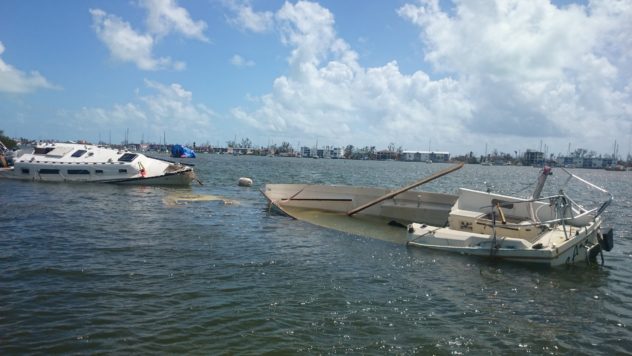 Boats lost and broken in the harbour and out to sea.
Boats lost and broken in the harbour and out to sea.
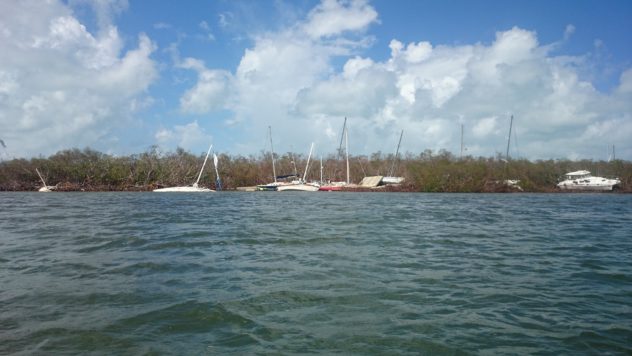 ‘Kettling’
‘Kettling’
How could I be effective, if people didn’t know my skills already? I hired a car. Boat-people are often short on cars. I shopped for enough food and water to be self-sufficient, and a sleeping bag; I could sleep in the car. I got in touch with a few boat-folk on facebook, and finally got the message back that there was a job for me, helping with supply. So I came.
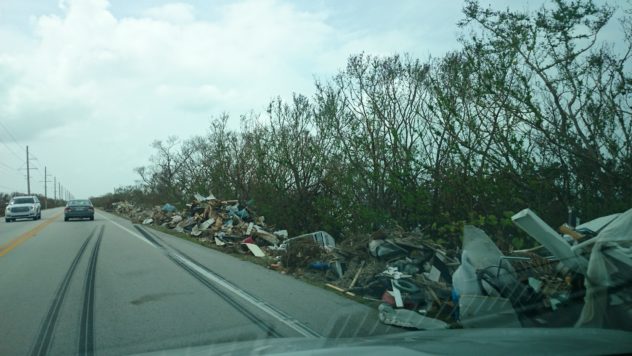
The way down USA Route 1 and the Overseas Highway was littered with evidence of the storm, from Miami down the next two hundred miles or so. A friend, Diana, had hooked up with a church community. I made a beeline for here, and on the way another friend, Charles, got in touch, saying there was another place to stay. Nobody needs food or water. Not really even building materials. The Government and Non-Government agencies have showered the Keys with these. But they do need helping hands. People. Possibly more in the coming weeks, as the focus turns from Keys Recovery efforts to other current crisis elsewhere. Willing hands are needed. Easy-going people who can lend a hand and are accustomed to putting themselves to work are very-much still needed.
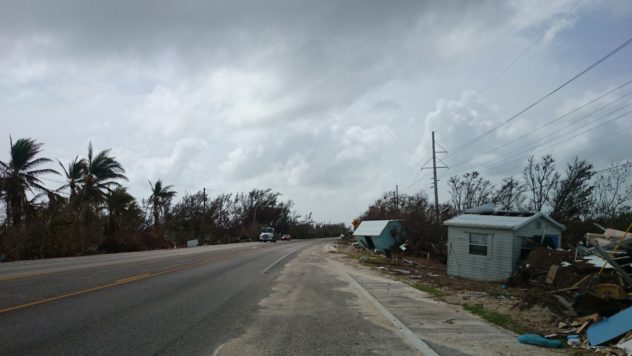
Many of the still-working hostelries are taken-up with FEMA workers and other charity groups. But it was initially unclear to me whether I could help. At the church, the main body of work is led, unsurprisingly, by sailors. Sailors live much of their time in crisis, and know how to focus on the important practical things. I spent the first two or three hours here clearing out an old thrift store which had lost some of its roof. Mould climbs the walls very quickly here. The water-logged carpet squelched as I moved around it, pulling out masses of heavy filing cabinets, stacks of sodden paperwork and waterlogged cheap office furniture. It was straightforward but not glamorous work. Perfect. Yesterday, I went with another volunteer to tarp-over a roof with nails and duct-tape on a parishioner’s house which again had lost some of its roof. It was windy with another small storm, but we worked in the sun and gusts to get the tarp nailed down.
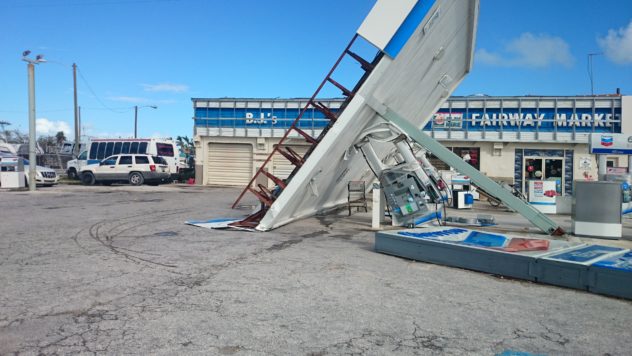 Business as Usual
Business as Usual
Today has been reconstructing docks, clearing a crumpled mass of metal sheet which was once a shed, some tree surgery too. There are a couple of places to stay in the church hall. But these people can’t afford to offer accommodation until they know how effective somebody will be. They are refugees themselves.
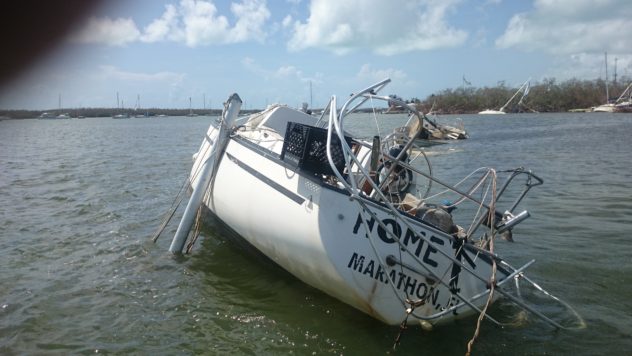
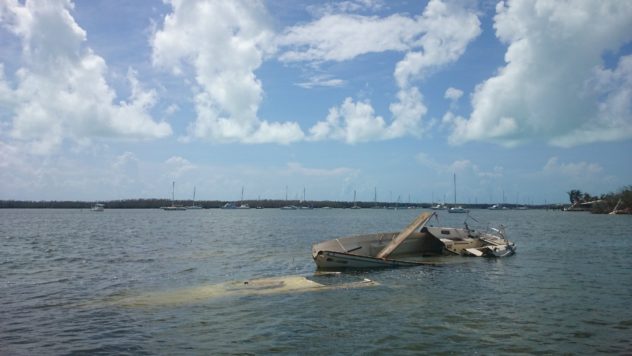
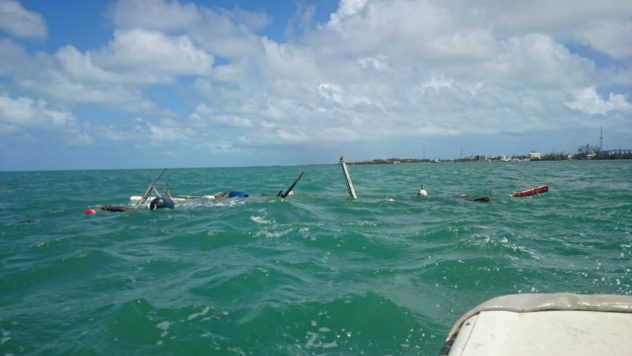 Out in the Gulf
Out in the Gulf
However, I had my car, and never needed it yet. The community spirit of the Keys couldn’t be stronger. ‘Welcome Home, Keys Strong’ was the message sprayed onto a plywood sheet as I crossed into Key Largo from the Mainland. Everybody is gathered, Florida-style, in shelter, around a big table, passing round rum and moonshine, and disappearing periodically to attend to a fallen tree, a smashed house, or a boat-recovery project. Hot showers are not a feature. But they don’t need to be. The main tasks are clearing and cleaning masses of foliage and household junk. The waste is phenomenal. But it is imperative to get dirty broken things away from living-space. For health reasons. A Northern hemisphere society accumulates material incessantly, and when this becomes detritus, it becomes hazardous very quickly. The Live-aboard community are the exception, and most treat the loss of their usually ininsured home – their boat – with a readily philosophical outlook. ‘The ocean gives, and the ocean takes away’. But they can inventorise every single item on their boat if pushed. One of everything. Many are living proof of William Blake’s maxim that ‘The road of excess leads to the palace of wisdom’. But that excess is an excess of life-experience. They are life-rich, material-poor.
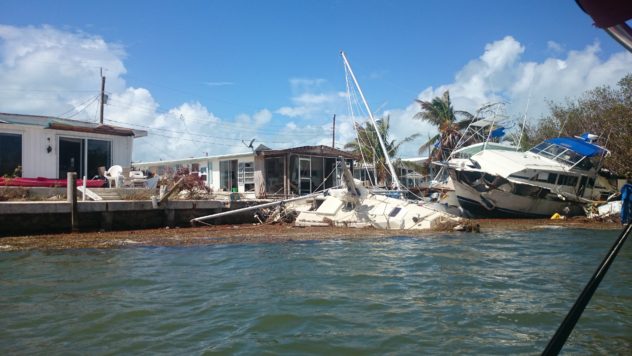 Getting intimate
Getting intimate
For many land-lubbers (‘dirt-dwellers’), this is a surreal new world of community contact and co-operation. For many a boat-dweller, this is just another big storm. The waves will keep coming, the trade-wind will keep blowing, and the days will pass. It is not 1932. Please get in touch with me if you need any guidance or opinions on how to be most effective. Organisation, construction, manual and legal skills are needed.
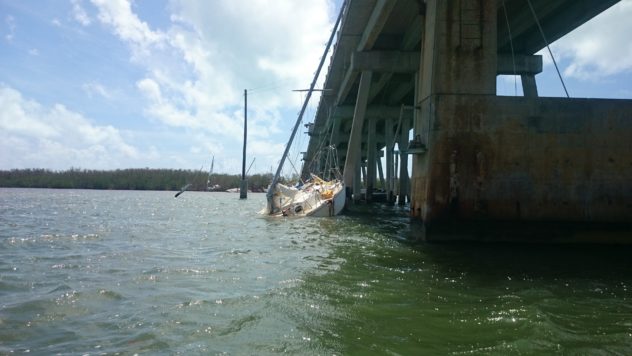 There are two other boats under the one visible…
There are two other boats under the one visible…
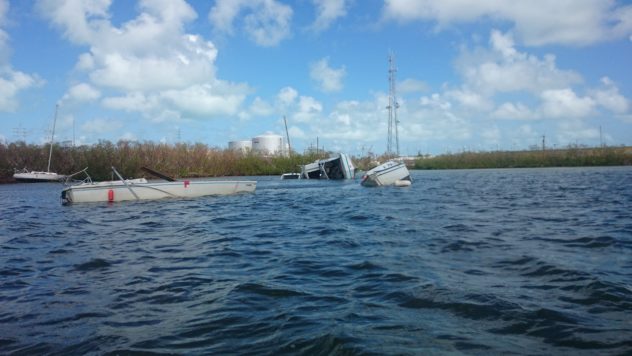 The houseboat may have brought some boats with it onto the shoals
The houseboat may have brought some boats with it onto the shoals
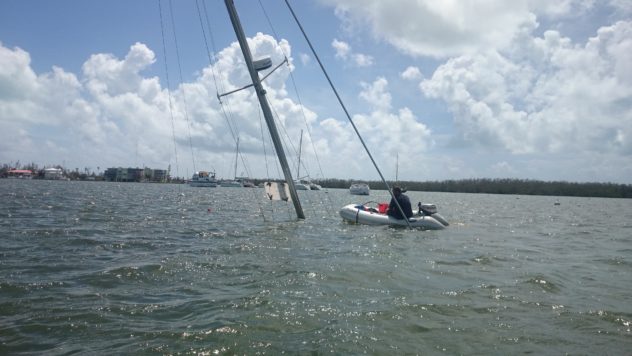 Waterworld: A diver retrieves a lifetime of personal belongings. A dinghy stands guard over the compressor lifeline.
Waterworld: A diver retrieves a lifetime of personal belongings. A dinghy stands guard over the compressor lifeline.
